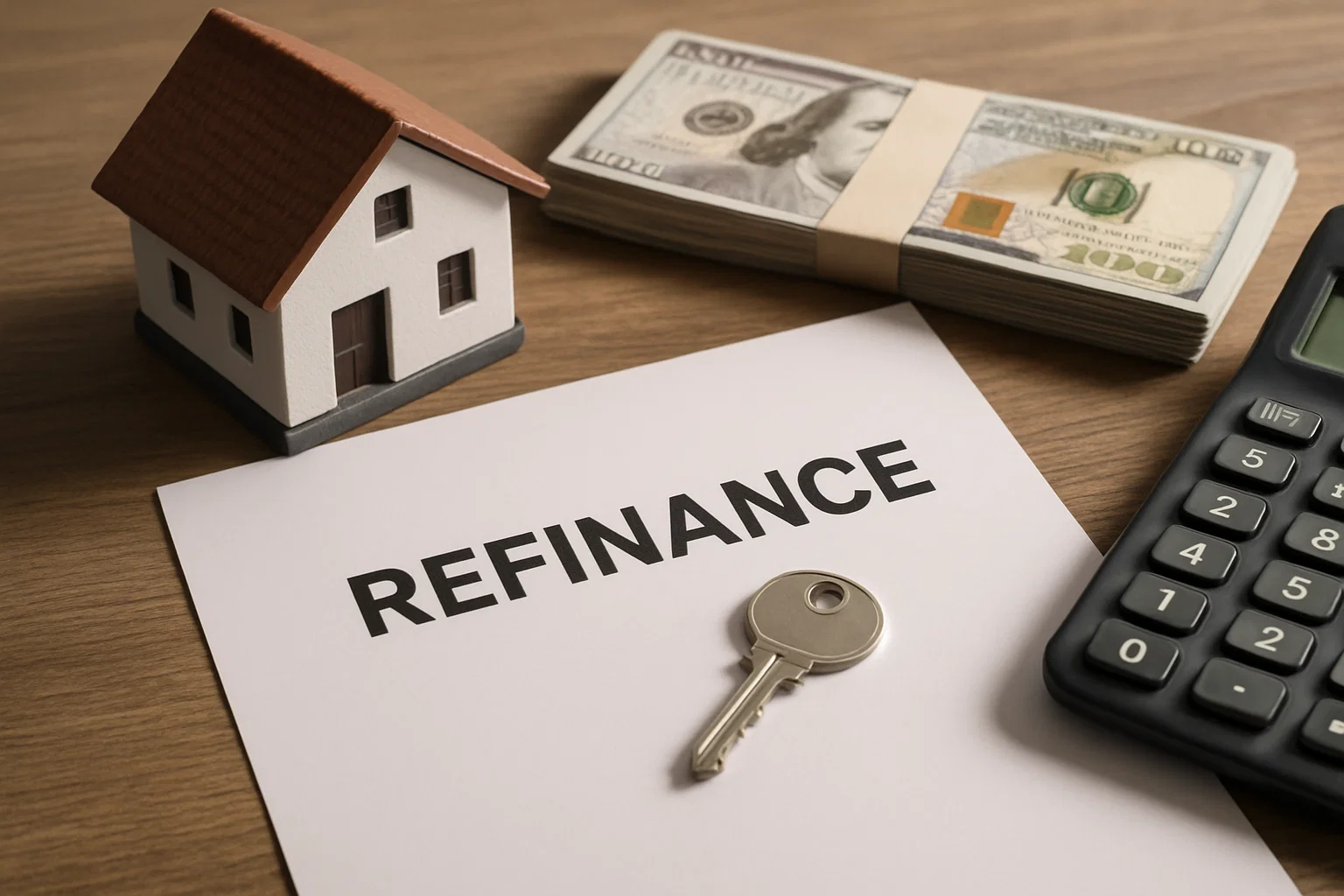.png)
Refinancing your home loan represents one of the most impactful financial decisions available to homeowners, yet the majority of borrowers never explore this option despite potentially overpaying thousands of rupees annually on their existing loans. The concept is straightforward—you replace your current loan with a new one offering superior terms that reflect today's market conditions and your improved financial standing. What makes refinancing particularly powerful is its ability to address multiple financial objectives simultaneously, whether that means reducing your monthly payment burden to free up cash flow, eliminating debt faster by shortening your loan tenure, or accessing your property's accumulated equity for important financial goals. Understanding the refinancing landscape, recognizing your optimal timing, and executing strategically can fundamentally transform your financial trajectory.
The lending marketplace has become extraordinarily competitive, with banks and financial institutions aggressively pursuing refinance customers through attractive promotional rates and streamlined approval processes. This borrower-friendly environment creates unprecedented opportunities for those willing to conduct thorough research and negotiate assertively. However, success requires moving beyond superficial rate comparisons to evaluate total costs, assess alignment with your financial objectives, and implement post-refinancing strategies that convert temporary savings into permanent wealth accumulation. This comprehensive guide provides the framework you need to determine whether refinancing makes sense for your situation and how to extract maximum value from the process.
Recognizing Your Refinancing Window

Market rate movements and economic cycles create the most obvious refinancing opportunities when prevailing interest rates fall substantially below what you're currently paying. Central bank monetary policy decisions directly influence commercial lending rates—when the Reserve Bank of India reduces repo rates to stimulate economic growth, banks typically follow by lowering their lending rates to remain competitive and encourage borrowing activity. These rate-cutting cycles represent prime refinancing windows where borrowers can capture significant savings. The conventional threshold suggests refinancing becomes worthwhile when available rates sit at least 0.75-1% below your current rate, though the exact calculation depends on your specific loan amount, remaining tenure, and closing costs. A borrower with ₹40 lakh outstanding and 18 years remaining who reduces their rate from 9.8% to 8.5% could save several lakhs in total interest while simultaneously lowering monthly EMI by thousands of rupees—savings that accumulate relentlessly month after month throughout the remaining loan period.
Personal financial transformation since your original loan approval often creates compelling refinancing opportunities independent of broader market conditions. Your financial profile evolves continuously through income growth, credit score improvements, debt reduction, and property value appreciation. If you've spent recent years building excellent credit through consistent on-time payments, you've likely moved into premium borrower categories commanding substantially better rates than when you first secured your loan. A credit score improvement from 680 to 770 could unlock rates 0.5-1% lower—seemingly modest percentage differences that generate enormous cumulative savings over 15-20 year loan tenures. Income increases through career advancement strengthen your debt-to-income ratio, demonstrating enhanced repayment capacity that lenders reward with favorable terms:
- Career promotions or job changes bringing 30-50% salary increases dramatically improve your borrowing profile
- Business success for self-employed individuals providing stable, documented income growth enhances refinancing eligibility
- Dual-income household formation through marriage strengthens loan applications and improves affordability assessments
- Debt elimination through disciplined paydown of other obligations reduces your total debt burden and improves refinancing terms
Strategic financial objectives beyond simple cost reduction influence which refinancing approach delivers optimal results for your unique circumstances. Cash-out refinancing allows accessing accumulated home equity for purposes like major renovations that increase property value, children's education expenses, or consolidating high-interest consumer debt into lower-rate mortgage obligations. This strategy proves particularly valuable when you're carrying credit card balances at 36-42% annual interest or personal loans at 14-18%—consolidating these into mortgage rates of 8-12% generates substantial interest savings while simplifying monthly payment management. However, it requires converting unsecured debts into secured obligations backed by your property and increasing your total mortgage balance, making financial discipline essential to avoid simply creating capacity for additional debt accumulation.
Implementing Your Winning Strategy

Preparation and documentation excellence establishes the foundation for securing premium terms that maximize your refinancing value. Begin 3-6 months before applying by obtaining credit reports from all major bureaus, identifying errors or discrepancies, and disputing inaccuracies formally. Strengthen your credit profile through targeted actions: reduce credit card balances below 30% of available limits; ensure all existing payments arrive consistently on time; avoid new credit applications generating hard inquiries. Assemble comprehensive documentation packages including recent income proofs spanning appropriate periods, tax returns with detailed computations for 2-3 years, bank statements demonstrating consistent savings patterns, existing loan details showing excellent payment history, and complete property documentation. Organize these systematically in clearly labeled folders, providing more than minimum requirements to demonstrate financial sophistication and accelerate approval timelines.
Aggressive comparison shopping and negotiation separates borrowers securing excellent deals from those accepting mediocre terms. Request detailed proposals from 5-7 lenders spanning traditional banks, housing finance companies, and digital platforms. Each evaluates risk differently and offers varying terms based on their funding costs and competitive positioning. Create standardized comparison frameworks evaluating complete cost structures—processing fees ranging from 0.25-2% of loan amount, legal charges, valuation expenses, prepayment penalties affecting future flexibility, and restrictive covenants limiting your options. Calculate annual percentage rates incorporating all costs for accurate comparison across different proposals. During negotiations, present competing offers requesting rate matching or substantial fee reductions. Lenders maintain considerable flexibility beyond published rates, particularly for borrowers with strong credit profiles and substantial property equity—request processing fee waivers, prepayment penalty elimination, or rate improvements, understanding that assertive but respectful negotiation frequently yields meaningful concessions.
Post-refinancing wealth acceleration strategies determine whether you fully capitalize on benefits or simply maintain previous financial patterns with marginally different terms. If refinancing reduces monthly EMI by ₹7,000-10,000, resist lifestyle inflation consuming these savings. Implement disciplined approaches that transform one-time refinancing benefits into lasting wealth accumulation:
- Continue paying your previous higher EMI amount, directing the difference toward additional principal prepayment that dramatically shortens loan tenure
- Establish systematic investment plans channeling monthly savings into diversified equity mutual funds generating potential returns exceeding loan interest rates
- Build robust emergency reserves covering 6-12 months of expenses before aggressive investing ensures unexpected shocks don't jeopardize loan payments
- Review refinanced loans annually to stay alert for additional opportunities if rates decline further or your financial profile strengthens
Long-term strategic integration ensures refinancing serves your broader financial objectives rather than functioning as an isolated transaction. Consider how refinancing fits into retirement planning—eliminating housing debt before retirement provides significant financial security when income may decline. Evaluate whether funds freed through lower payments should flow toward children's education savings, investment portfolio development, or business ventures generating returns exceeding loan interest rates. Consult financial advisors who can integrate refinancing decisions into comprehensive financial plans addressing multiple goals simultaneously.
Refinancing succeeds when approached as strategic financial optimization requiring thorough analysis, careful preparation, aggressive comparison shopping, and disciplined implementation. Borrowers who invest effort in understanding their complete financial pictures, evaluating all available options systematically, and deploying savings strategically consistently achieve superior outcomes that compound into substantial long-term financial security and wealth accumulation.

Alex Chen

Alex Chen













Get in touch with a loan officer
Our dedicated loan officers are here to guide you through every step of the home buying process, ensuring you find the perfect mortgage solution tailored to your needs.
Options
Exercising Options
Selling
Quarterly estimates
Loans
New home

Stay always updated on insightful articles and guides.
Every Monday, you'll get an article or a guide that will help you be more present, focused and productive in your work and personal life.









.png)
.png)
.png)
.png)
.png)
.png)
.png)
.png)
.png)
.png)
.png)
.png)
.png)
.png)
.png)
.png)
.png)
.png)